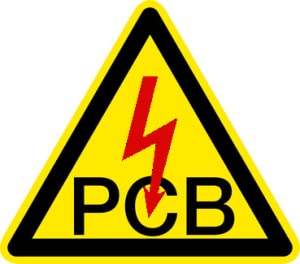Free shipping
No products in shopping cart
Continue shopping
People who are concerned with a healthy lifestyle usually also try to minimize the numerous toxins in their environment. This applies to food, textiles and home furnishings. Be it for the sake of their own health or for environmental reasons.
It has long been proven that certain chemical substances can disrupt our hormone system and important regulatory circuits in the body. These substances are called “endocrine disruptors” (EAS). To understand how the EAS cause such disorders, let’s look at how our body cells communicate:
Our body uses electrical impulses to communicate between cells. These signals allow us to lift our leg or report when we hit our knee, etc. The heartbeat and other organ functions are also dependent on these electrical impulses. Since so much depends on our body’s own electrical system, disturbances in it can naturally cause serious problems.
Unfortunately, the endocrine disruptors (EAS) mentioned above partially alter the hormonal communication system in our body. (Which uses electrical signals for communication) So when we are exposed to these chemicals, even the smallest amounts, it can unfortunately lead to a wide range of health problems.
Henry C. Lai, Professor of Biotechnology at the University of Washington in Seattle, explains it this way:
“Electromagnetic fields behave in a similar way to other harmful substances (such as drugs, tobacco, alcohol, asbestos, psychological stress, etc.). The harmfulness of the substances is based on their effects on certain organs, such as tobacco smoke on the lungs and psychological stress on the endocrine system. Small doses can also trigger non-linear reactions, sometimes with different effects than high doses.”
Another thing we have in common is that the International Agency for Research on Cancer (IARC) has been classifying electromagnetic fields as possibly carcinogenic for three years. EMFs from cell phones, cell phone towers, etc. are therefore in the same category as DDT, lead and other environmental toxins.
In our modern world, however, we are all more or less exposed to these harmful influences. We can avoid some toxic substances in our personal use, but there are always residues of them in the air we breathe and in drinking water, as some of the substances only degrade slightly over decades.
Fortunately, our body recognizes toxins and normally tries to eliminate them again as long as we have sufficient resources to do so. This excretion takes place primarily via the kidneys and liver. If the organism is overloaded, toxins are “stored” in the connective tissue and organs and lead to complaints over time, as the control circuits described above are disturbed.
From this point of view, it certainly makes a lot of sense to support our organs in order to prevent a pathogenic accumulation in the body as far as possible. There are numerous options in the form of herbal tinctures or food supplements, for example. Ask your naturopath or your trusted chemist for more information.
Additional relief is provided by a harmonization of living space, more detailed information can be found in the chapter “Knowledge”.
If you are already suffering from symptoms that could be related to environmental pollution, we recommend that you seek additional medical advice. Preferably with a doctor who has undergone further training in complementary treatment methods, or in a biological-integrative clinic.
Original contribution:
A home is more than just a place to live. It is a retreat where we can relax, recharge our batteries and spend time with our loved ones. A harmonious living environment plays a decisive role in our well-being and health. But how can we achieve this harmony? This is where the products from Swiss Harmony come into play.
In a world increasingly shaped by electrosmog, radiation, and other negative environmental influences, finding solutions that improve both personal well-being and ecological impact has become more important than ever. This is where Swiss Harmony comes in: we offer products designed to harmonize your environment without adding extra burdens to you or the environment.
Electromagnetic fields (EMF) are an invisible threat increasingly permeating our daily lives. These fields disrupt the natural cellular communication in our bodies because they do not originate from nature and are foreign to our organisms. Unlike an obvious poisoning, they leave no visible traces, making it almost impossible to recognize them as the cause of intercellular malfunctions.